Over the last few years, my blog has been dormant because sometimes life just happens. But this year, I am going to get back into my blogging and have decided to join this years 52 Ancestors in 52 Weeks. The prompt for Week 1 is “Family Lore”.
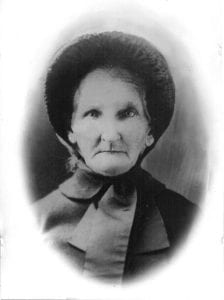
Mary Ann during her time as a Salvation Army member
Many of us family historians start out journey with family stories that have been passed on by family members. In my own family, I had a Great Uncle who had traced his family tree (which is my maternal line) during the 1980s and handed me a lot of his research when I became interested in doing family history. One ancestor which intrigued me was a woman called Mary Ann Green who was my 3x great grandmother. She was also one of the few ancestors that I had seen a picture of when I first started family history.
The family lore was that she had been born on the Hawkesbury River in 1830 to unknown parents who had ‘come free’ from England. The story was that her parents were unknown as when Mary Ann was 3 years old, both her parents had drowned in the Hawkesbury River Floods of 1833. Perhaps the thought of Mary Ann losing her parents at such a young age also piqued my interest, so I did some digging to find out more about Mary Ann.
Firstly, I searched for information about the 1833 flood of the Hawkesbury River. If people had drowned, surely there would have been a mention somewhere? Lo and behold, after many hours of internet searching and consulting with the Hawkesbury Library Service I found that there was no flood of the Hawkesbury recorded that year. I puzzled over this, but thought perhaps the date had been remembered wrong. However, when looking at Mary Ann’s marriage and death records I found no clues as to who her parents were.
Looking on NSW births, deaths and marriages I found a number of Mary Ann Green’s born either in 1830 or the few years before and after. I diligently ordered transcripts of likely looking records, only to find none of the Mary Ann’s were born anywhere near the right area. I was confident that she had indeed been born in the Hawkesbury area as every other certificate I had that related to Mary Ann confirmed that she had been born in the Hawkesbury area.
After many years of on and off research, I connected with a distant family member on Ancestry who was related to Mary Ann via her second marriage. I had noticed that this person had a birth date and parents for Mary Ann, so I reached out to them to see where they had got their information from. Well, that proved to be an excellent decision as it turned out she had got this information from a mix of family lore and a very well researched family history book.

Mary Ann’s Baptism Record
It turns out the elusive father of Mary Ann that I had been searching for any evidence of was not in fact her father and her surname was not Green. Rather, Mary Ann had been born to Dorothy Pickett and William Parsons. Not much is know about William Parson but Dorothy was the daughter of two convicts, with her father arriving on the First Fleet and her mother on the Second Fleet. After that, finding a record of her Baptism was a piece of cake. So, in that case the family lore was proved incorrect. Perhaps it started as a way of covering up the ‘convict stain’ as I have found in other areas of my family.
However, all was not lost with Mary Ann. Another piece of lore passed on about Mary Ann’s funeral was proved correct. Mary Ann died in 1914, and my Great Uncle wrote that Mary Ann’s funeral cortege proceeded down the main street of Penrith, NSW (where she had been living with her daughter) and was accompanied by the local Salvation Army band on its journey to the cemetery. This was proved to be accurate through Mary Ann’s obituary, which was published in the local newspaper. A notice about the funeral was also published in the Salvation Army publication The War Cry, which described how her funeral cortege was accompanied up the main street of Penrith by the band and a contingent of the local Corps Soldiers (church members).

Account of Mary Ann’s funeral in The War Cry
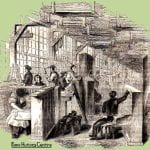



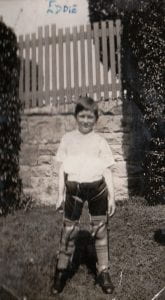

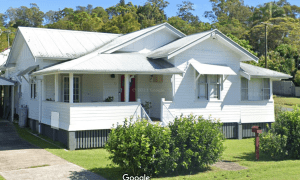

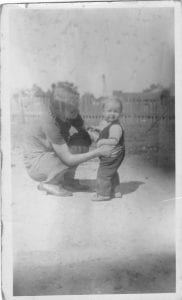
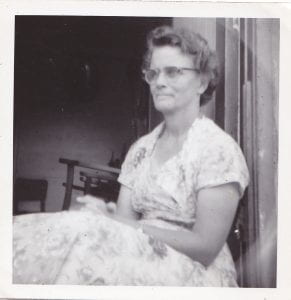
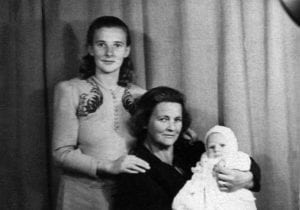





 At last, I have reached the finish line and this is my final post in the A to Z challenge for 2020. Now, I only had one Z name in my family tree so it was always going to be Zibiah. The name Zibiah is of Hebrew origin and has the meaning gazelle, or beautiful lady. Personally, I think this is such a beautiful meaning and for me it conjures up in my mind a girl aged around 11 or 12 who is beautiful and graceful and full of life. Being a Hebrew name, it is perhaps unsurprising that the name appears in the Old Testament of the Holy Bible. Zibiah of Beersheba appears in 2 Kings 12:1 and 2 Chronicles 24:1 as the mother of King Jehoash or Joash of Judah.
At last, I have reached the finish line and this is my final post in the A to Z challenge for 2020. Now, I only had one Z name in my family tree so it was always going to be Zibiah. The name Zibiah is of Hebrew origin and has the meaning gazelle, or beautiful lady. Personally, I think this is such a beautiful meaning and for me it conjures up in my mind a girl aged around 11 or 12 who is beautiful and graceful and full of life. Being a Hebrew name, it is perhaps unsurprising that the name appears in the Old Testament of the Holy Bible. Zibiah of Beersheba appears in 2 Kings 12:1 and 2 Chronicles 24:1 as the mother of King Jehoash or Joash of Judah. As I’m getting close to the end of the A to Z challenge, I’ve had to be creative with the letters X and Y. Yesterday, I had X for ‘X mark’ and today my topic os Y for Yankee. When I originally sat down and planned what to write about for each letter of the alphabet, I couldn’t for the life of me think of anything for the letter Y. So, I did something I haven’t done in a very long time. I pulled out the dictionary in an attempt to think outside the box. Now, I was at my day job as a library assistant at the time so I had a nice fat dictionary in which to hunt for inspiration. Now, even in a nice fat dictionary Y isn’t exactly the largest section in the dictionary. Finally, I lit on the word Yankee and I suddenly had my inspiration.
As I’m getting close to the end of the A to Z challenge, I’ve had to be creative with the letters X and Y. Yesterday, I had X for ‘X mark’ and today my topic os Y for Yankee. When I originally sat down and planned what to write about for each letter of the alphabet, I couldn’t for the life of me think of anything for the letter Y. So, I did something I haven’t done in a very long time. I pulled out the dictionary in an attempt to think outside the box. Now, I was at my day job as a library assistant at the time so I had a nice fat dictionary in which to hunt for inspiration. Now, even in a nice fat dictionary Y isn’t exactly the largest section in the dictionary. Finally, I lit on the word Yankee and I suddenly had my inspiration. Getting on the home stretch with this challenge now. But had to get creative with the letter ‘X’, as I don’t have anyone with an X anywhere in their name or a location with X in it. So the topic for my X post is ‘X mark’.
Getting on the home stretch with this challenge now. But had to get creative with the letter ‘X’, as I don’t have anyone with an X anywhere in their name or a location with X in it. So the topic for my X post is ‘X mark’. W is for William Starr, my fourth great grandfather. William was born 8 December 1807 in Sedlescombe, Sussex, England to Philadelphia Starr and Richard Milham. At the time of William’s birth, his mother was aged only 14 years of age and his parents were not married. As a result, William’s was registered as a ‘baseborn’ child and his father’s name doesn’t appear on his baptism record. However, we know that Richard Milham was his father as parish records exist that detail Richard’s obligations to provide monetary support to Philadelphia for the raising of William.
W is for William Starr, my fourth great grandfather. William was born 8 December 1807 in Sedlescombe, Sussex, England to Philadelphia Starr and Richard Milham. At the time of William’s birth, his mother was aged only 14 years of age and his parents were not married. As a result, William’s was registered as a ‘baseborn’ child and his father’s name doesn’t appear on his baptism record. However, we know that Richard Milham was his father as parish records exist that detail Richard’s obligations to provide monetary support to Philadelphia for the raising of William. William Starr was buried in the Church of England portion of the Necropolis on 10 November 1874. When his wife Sophia died three years later, she was interred in the same grave although she doesn’t have an inscription on the headstone, Presumably there was many to be an inscription, as blank space has been left but for whatever reason an inscription for Sophia was never added to the headstone.
William Starr was buried in the Church of England portion of the Necropolis on 10 November 1874. When his wife Sophia died three years later, she was interred in the same grave although she doesn’t have an inscription on the headstone, Presumably there was many to be an inscription, as blank space has been left but for whatever reason an inscription for Sophia was never added to the headstone.